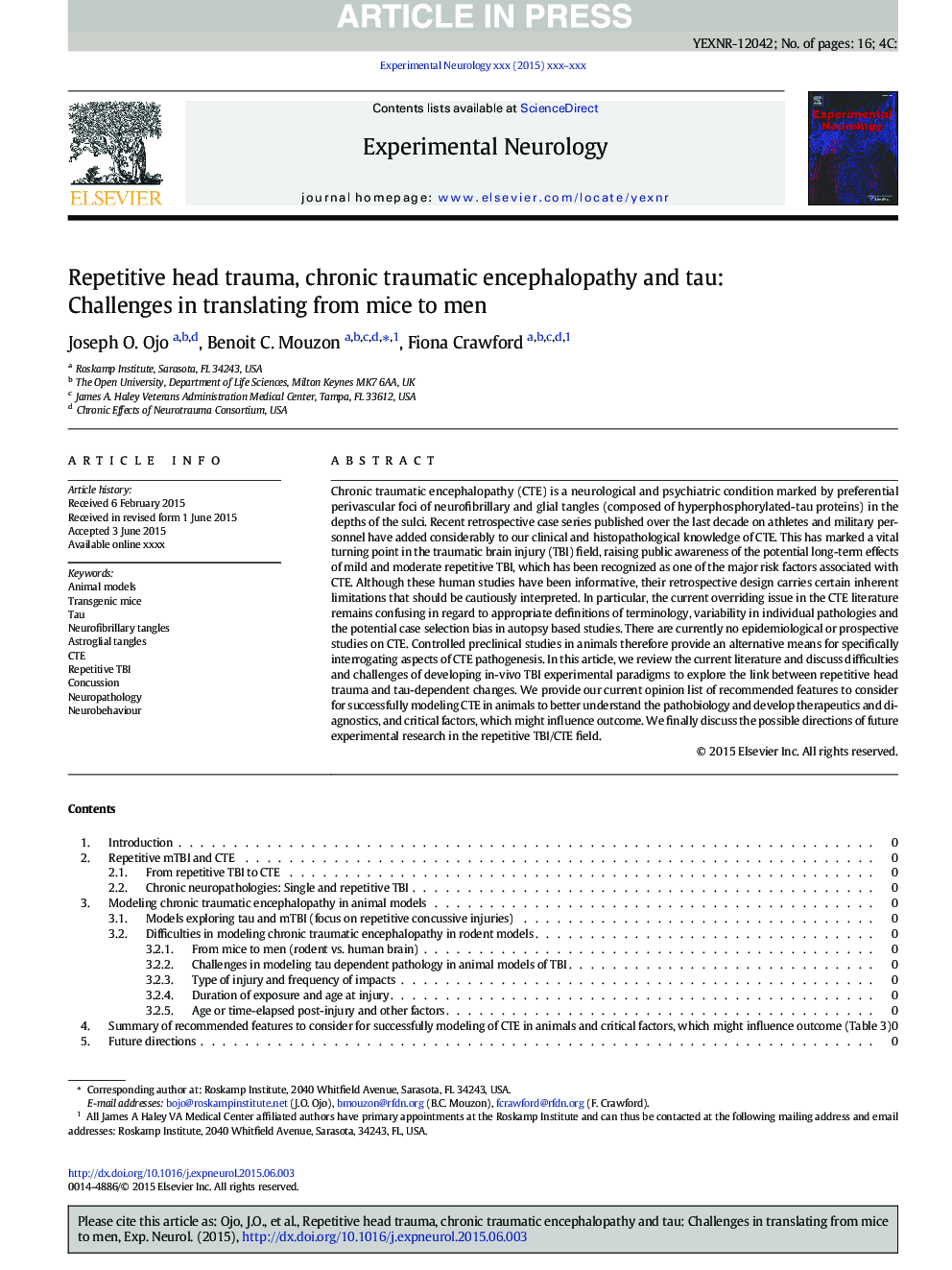| Article ID | Journal | Published Year | Pages | File Type |
|---|---|---|---|---|
| 6017099 | Experimental Neurology | 2016 | 16 Pages |
Abstract
Chronic traumatic encephalopathy (CTE) is a neurological and psychiatric condition marked by preferential perivascular foci of neurofibrillary and glial tangles (composed of hyperphosphorylated-tau proteins) in the depths of the sulci. Recent retrospective case series published over the last decade on athletes and military personnel have added considerably to our clinical and histopathological knowledge of CTE. This has marked a vital turning point in the traumatic brain injury (TBI) field, raising public awareness of the potential long-term effects of mild and moderate repetitive TBI, which has been recognized as one of the major risk factors associated with CTE. Although these human studies have been informative, their retrospective design carries certain inherent limitations that should be cautiously interpreted. In particular, the current overriding issue in the CTE literature remains confusing in regard to appropriate definitions of terminology, variability in individual pathologies and the potential case selection bias in autopsy based studies. There are currently no epidemiological or prospective studies on CTE. Controlled preclinical studies in animals therefore provide an alternative means for specifically interrogating aspects of CTE pathogenesis. In this article, we review the current literature and discuss difficulties and challenges of developing in-vivo TBI experimental paradigms to explore the link between repetitive head trauma and tau-dependent changes. We provide our current opinion list of recommended features to consider for successfully modeling CTE in animals to better understand the pathobiology and develop therapeutics and diagnostics, and critical factors, which might influence outcome. We finally discuss the possible directions of future experimental research in the repetitive TBI/CTE field.
Keywords
Related Topics
Life Sciences
Neuroscience
Neurology
Authors
Joseph O. Ojo, Benoit C. Mouzon, Fiona Crawford,
